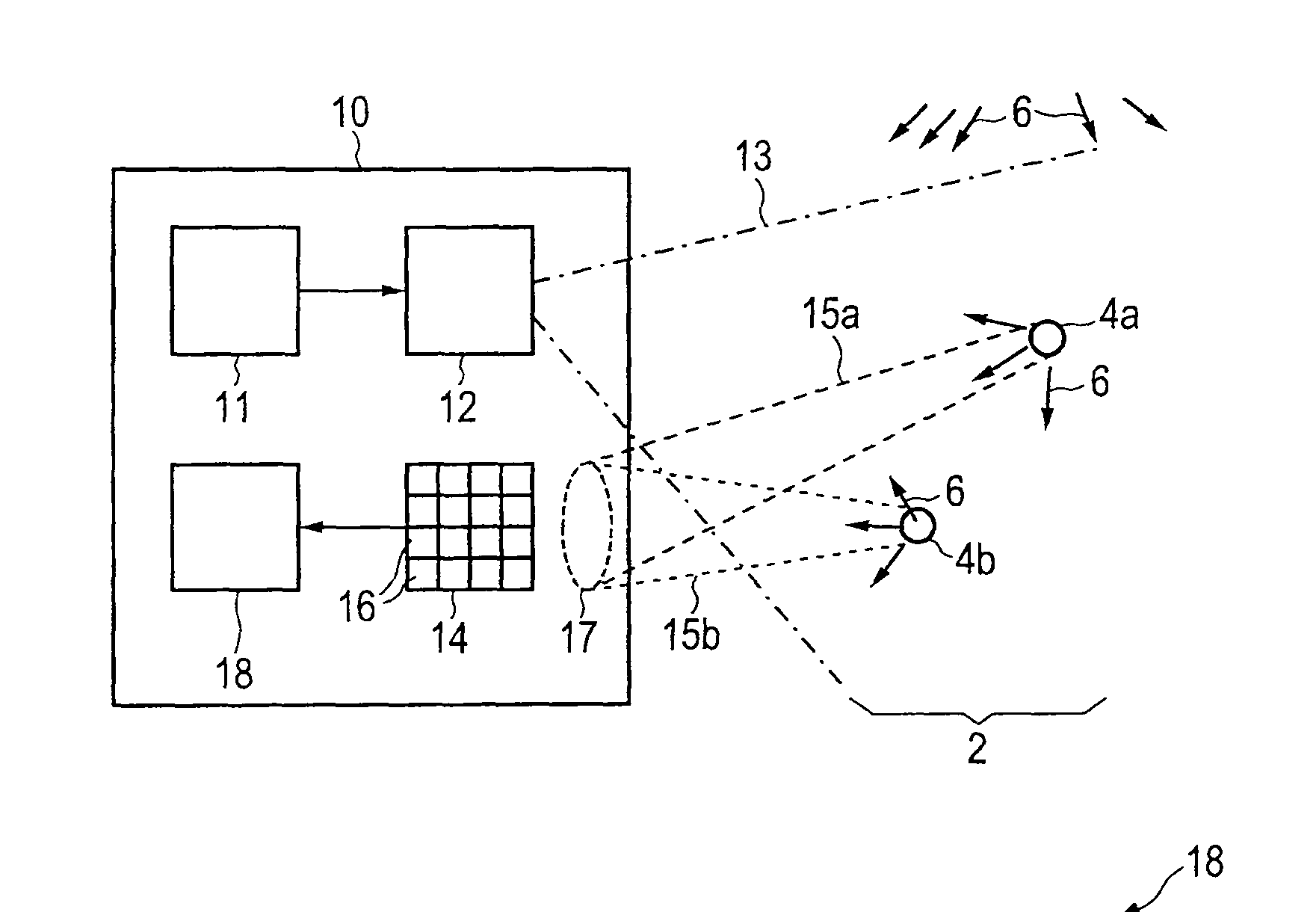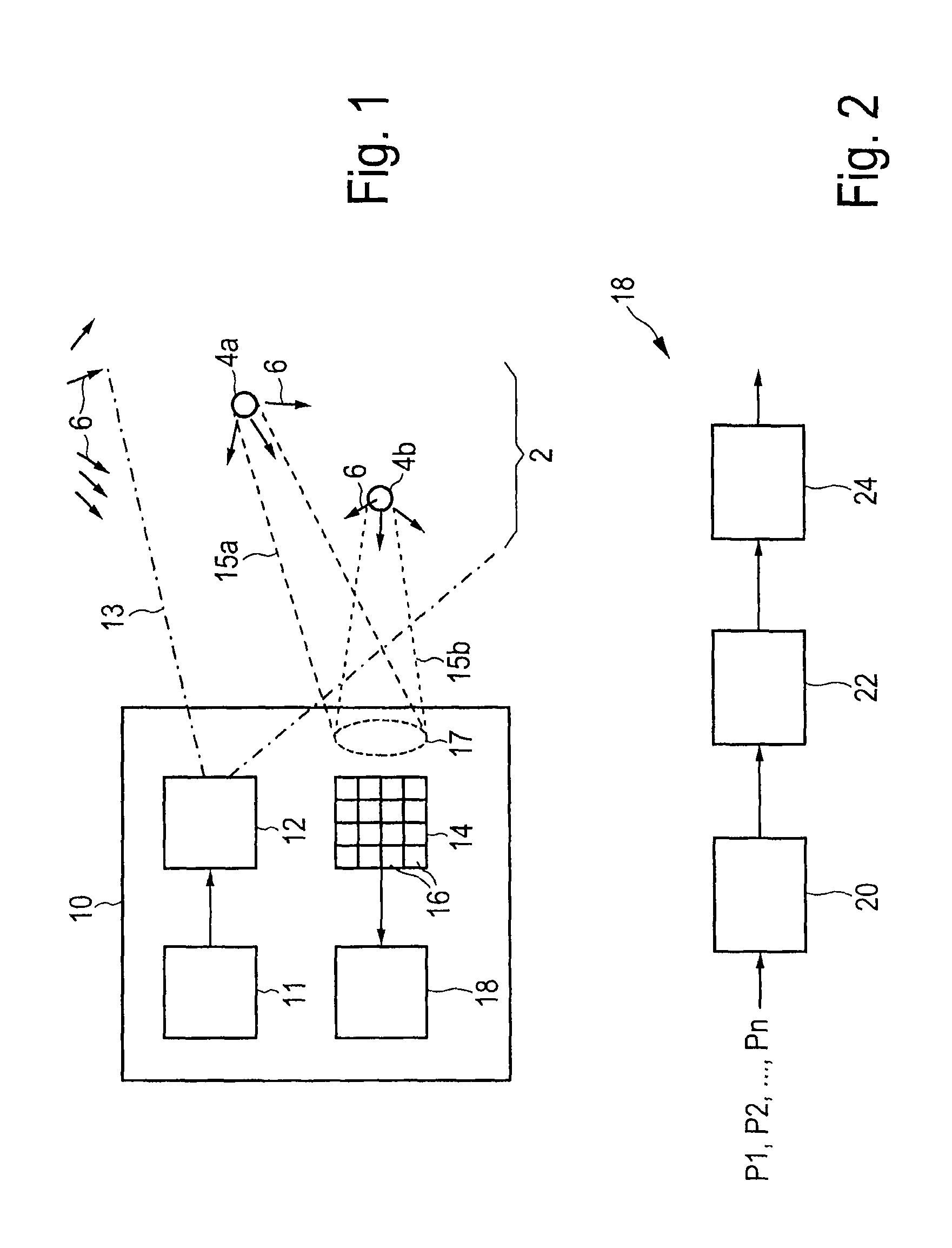3D time-of-light camera and method
a time-of-light camera and time-offlight technology, applied in the field of 3d time-of-light cameras, can solve the problems of inability to acquire all raw images instantaneously, current tof cameras and methods cannot deliver optimal depth maps for moving sceneries, and the temporal delay between raw data acquisitions, so as to achieve the effect of effectively detecting and compensating motion artifacts without requiring high computational efforts or complex additional hardwar
- Summary
- Abstract
- Description
- Claims
- Application Information
AI Technical Summary
Benefits of technology
Problems solved by technology
Method used
Image
Examples
Embodiment Construction
[0042]A schematic diagram of a 3D ToF camera 10 according to the present invention is shown in FIG. 1. Such a camera 10 is generally used for acquiring information about a scene 2. Such information may particularly comprise information for generating depth images of a scene, information about phase shifts of a scene or environmental information about the scene. The following description referring to FIGS. 1 to 6 will, as an example, focus on the acquisition of depth images, in particular on the acquisition of distance information about the distance of one or more objects, in the embodiment shown in FIG. 1 a background object 4a and a foreground object 4b, of the scene 2 from the camera 10. This distance information is, besides the reflectivity of one or more objects 4 of the scene 2 and the intensity of non-modulated radiation (which includes ambient light and non-modulated light emitted by the radiation source) 6, one of the three unknown factors to be determined to be able to gene...
PUM
 Login to View More
Login to View More Abstract
Description
Claims
Application Information
 Login to View More
Login to View More - R&D
- Intellectual Property
- Life Sciences
- Materials
- Tech Scout
- Unparalleled Data Quality
- Higher Quality Content
- 60% Fewer Hallucinations
Browse by: Latest US Patents, China's latest patents, Technical Efficacy Thesaurus, Application Domain, Technology Topic, Popular Technical Reports.
© 2025 PatSnap. All rights reserved.Legal|Privacy policy|Modern Slavery Act Transparency Statement|Sitemap|About US| Contact US: help@patsnap.com



